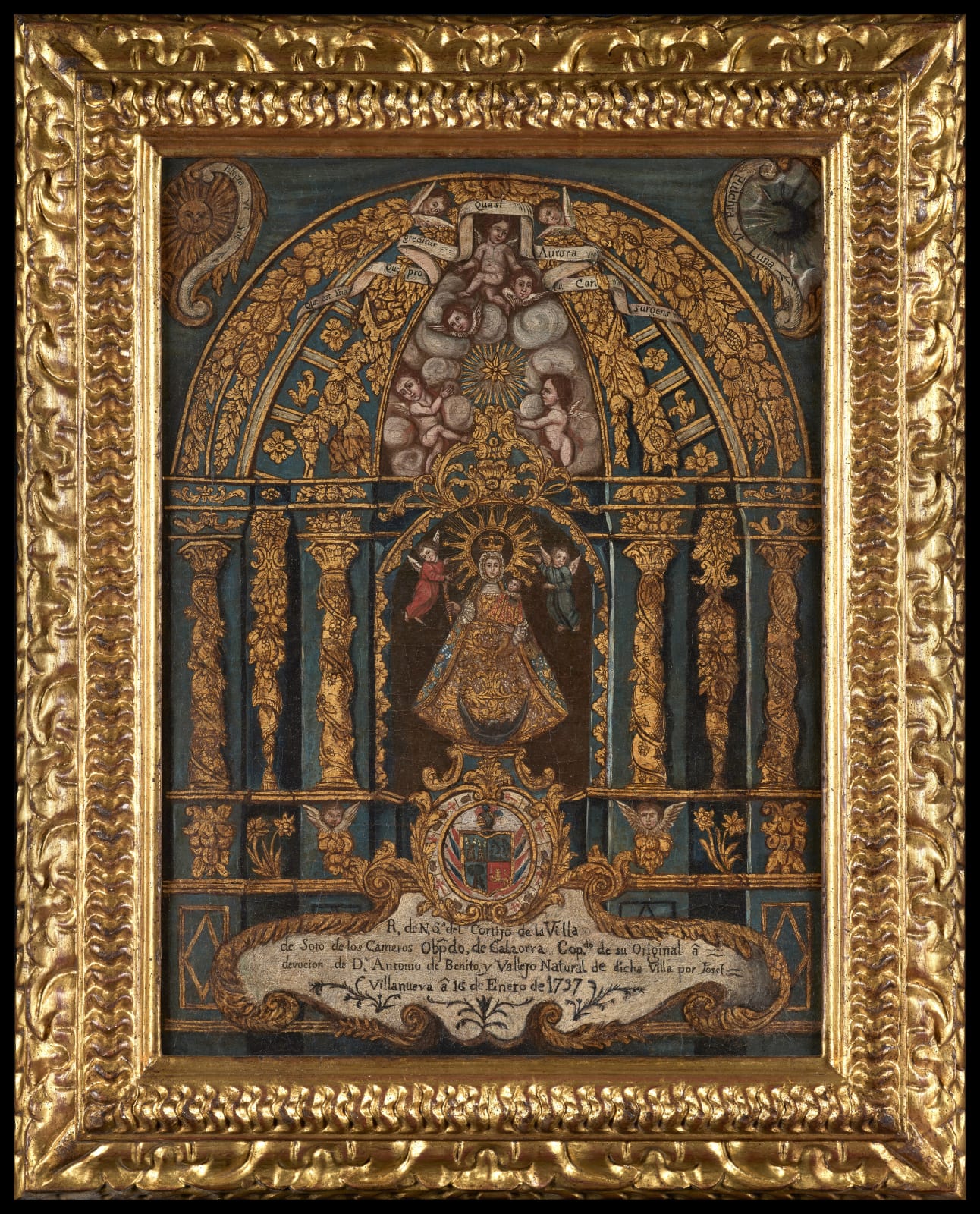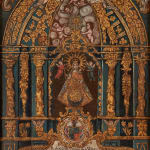JOSEF VILLANUEVA
Provenance
Private collection, Spain
Inscription ¨R. de N Sa del cortijo de la villa de soto de los cameros Obpdo. de Calaorra Copdo. de su original a devoción de Dn Antonio de benito y Vallejo Natural de dicha Villa por Josef Villanueva a 16 de enero de 1737¨
Although the canvas whose origin we are trying to elucidate in these few lines is the only work known by the hand of its author, we can place it within the historical-artistic framework of the school of Potosí in the 18th century. More precisely, the date of production, as the cartouche indicates, was 16 January 1737.
In claiming it originated from Potosí, we rely exclusively on the formal and compositional analysis of the work, as stated below. This type of Marian advocation represented in pictorial supports such as canvases, panels or murals, corresponds to the genre of painted sculptures that depict popular devotional effigies shown within their respective altars. As the inscription states, this canvas is a Retrato de Nuestra Señora del Cortijo de la Villa de Soto de los Cameros (Portrait of Our Lady of El Cortijo from the Town of Soto de los Cameros) .
Villanueva’s representation of the High Altar includes a niche within which the Crowned Virgin appears in bright, starry splendor. Standing on a half-moon symbolizing female divinity and fertility, she is presented at the center of the composition, facing forward and cradling the Holy Child in her left arm and holding a candle in her right hand. She is wearing an elaborate robe, decorated with gold brocade, and two angels hold her bright splendor. Decorations with plant motifs with brilliant gilt motifs superimposed upon them present a peculiar aesthetic effect characteristic of paintings from Cuzco, Quito, Potosí and New Spain.



